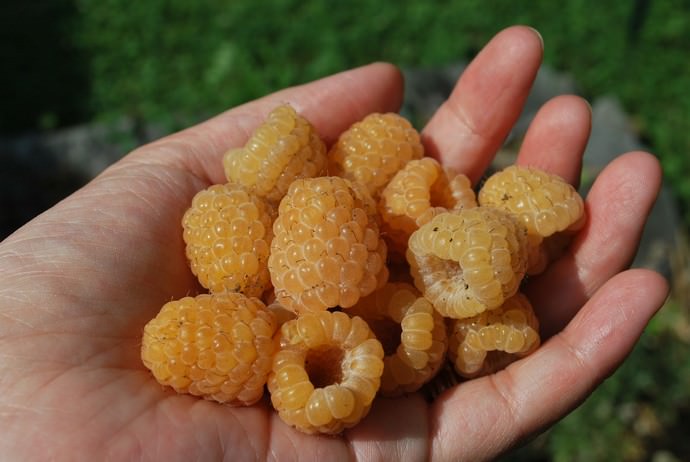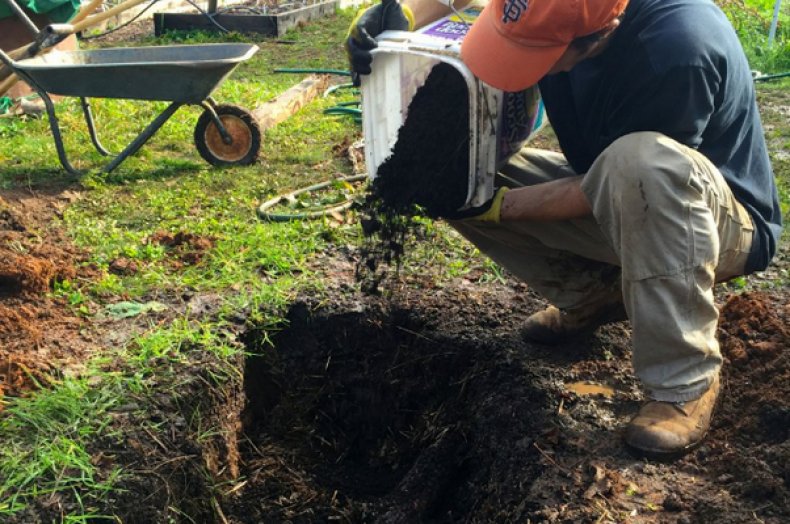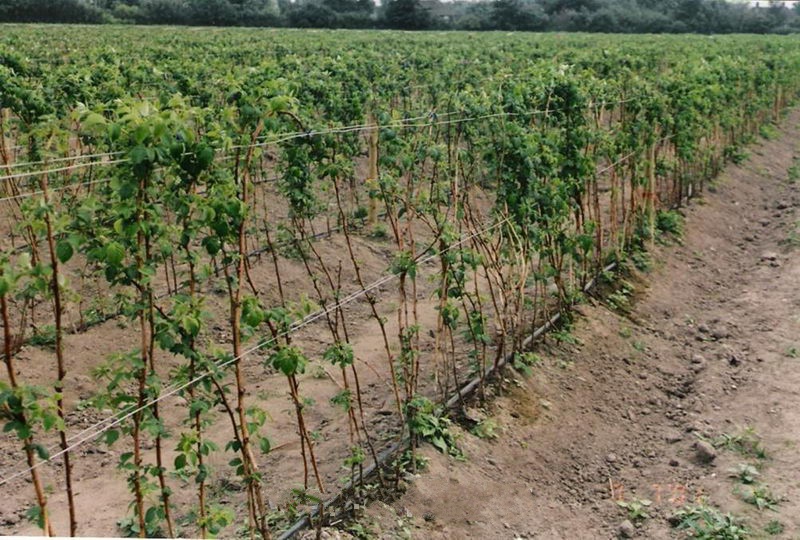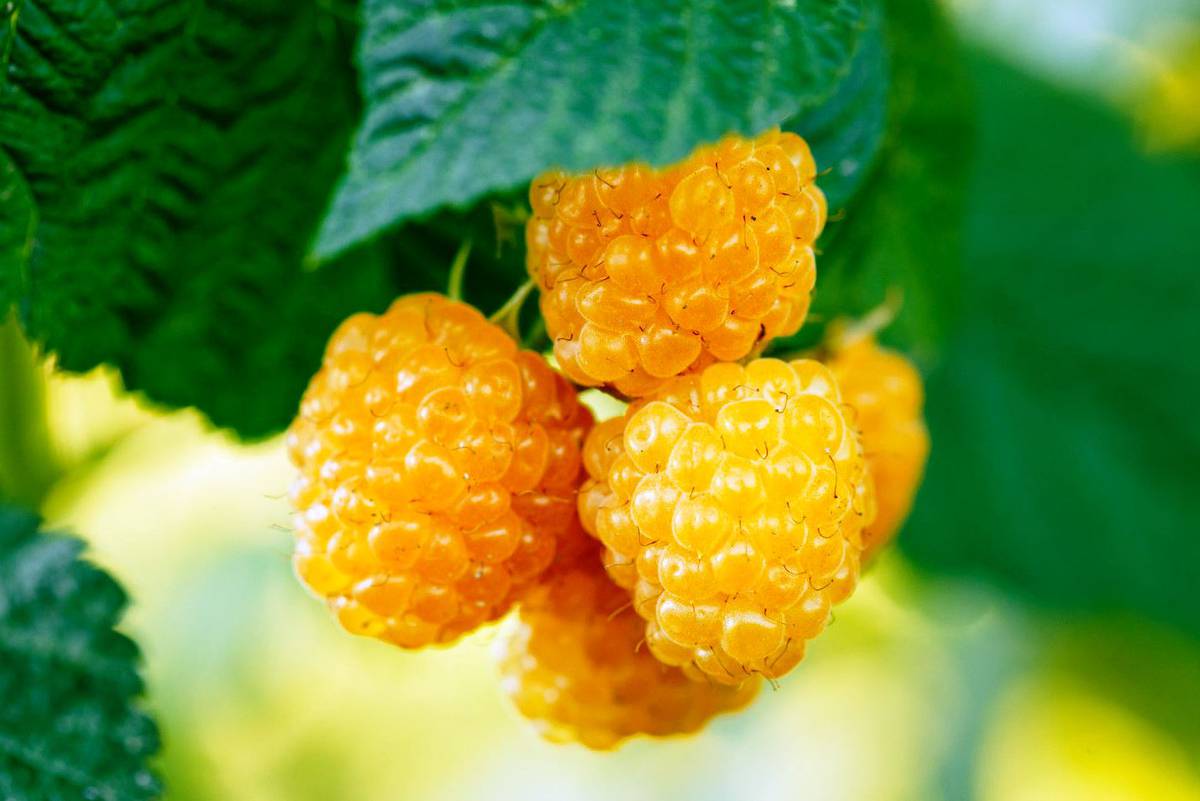Content:
Raspberry Golden Domes are a variety of remontant raspberries popular with gardeners. Its description can be found in the State Register of Crops Recommended for Cultivation in Central Russia. Excellent commercial qualities, unusual appearance and simple care attract the attention of many to this variety: both an experienced gardener and a novice summer resident take on the cultivation. Even those who do not like to conduct experiments in the country should pay attention to this plant. Because raspberry Yellow Domes is a very interesting and promising variety that has excellent taste and, moreover, will decorate the garden with its unusual colored berries and will delight them throughout the long summer-autumn season.
Description of the variety
What is the Golden Dome raspberry, what is the description of the variety and its characteristics, we will tell you in more detail.
The yellow color is the first distinguishing feature of this unusual raspberry. The berries are beautiful with a warm shade, which, when overripe, becomes soft apricot; in their shape they are slightly elongated, neat, even.
Among the positive characteristics, an unconditional plus is the size of the berry. So, on average, this raspberry is quite large, the weight of the berry is from 3.6 to 3.8 g. Raspberries of this variety have a hemispherical shape of berries, which, when fully ripe, are covered with delicate weak pubescence. However, this does not affect the taste in any way.
The taste is pleasant, sweet and sour and a little unusual, in comparison with traditional raspberries. Ripe berries are tender, soft, but firm. In terms of composition, the characteristics of the berry are as follows:
- more than 6 percent sugars;
- less than 1.5 percent acid;
- 14 percent dry matter.
The short stalks, on which the berries are attached, facilitate harvesting - the crop can be removed from the branch without problems.
The leaves of the variety are juicy green with slight curl and pronounced wrinkles. As for the branches, they are quite tall, but in general this raspberry does not differ in excessive spreading and bushiness. This is important for owners of small plots where you have to save space for placing garden crops. Tall bushes are convenient to handle, including harvesting, garters, and other manipulations.
Important! There are small thorns along the entire surface of the raspberry stems, which, however, are not aggressive and thin, therefore they do not cause much trouble to gardeners.
This is a remontant variety, which means that the bushes, subject to the appropriate agrotechnics, will give the crop several times per season. More precisely, gardeners take the first harvest in June-July, the second wave of active fruiting begins in August and lasts until September inclusive.
On a note. The variety is self-fertile, it is a universal variety.
The yield of this berry is also good. So, the raspberry harvest can, on average, reach up to hundreds of centners per hectare, if the cultivation was carried out in compliance with all agrotechnical requirements. For varieties of the remontant type, this is a fairly good indicator. If we translate these indicators into the plane of the usual dacha terminology, then the collection from one bush is expected on average about two kilograms.
Pros of Raspberry Golden Domes
Before talking about the features of growing this variety, let us briefly summarize, noting the positive characteristics of the plant:
- Extended ripening period - like any remontant berry, it ripens in waves, from the beginning of summer to the very frost;
- Harvest stability - even in not very favorable years, the gardener will not be left without raspberries;
- It stays perfectly in the refrigerator for several days, as the berries are dense, mature, healthy;
- The versatility of the application allows you to use the berry fresh, use it for preparing compotes, preserves, freeze, etc.;
- Ease of transportation - when delivering planting material, the bushes retain a good presentation and firmly endure uncomfortable transportation conditions;
- Disease and pest infestation are less common than in other varieties of common raspberries. In no small measure, thanks to the efforts of breeders, who took care of the development of resistance to diseases in the variety and the improvement of the overall ability of this variety to resist the most famous pests;
- Drought resistance and the ability to survive in the cold season - this variety is good for excellent survival. Only in areas with a continental climate, producers of the variety are advised to cover plantings for the winter. In other conditions, the bushes tolerate both a drop in temperature to -22 degrees and a small short-term drought.
Since consumers did not notice the minuses of this variety, it can be classified as promising for cultivation.
Features of variety care
In principle, this golden variety is a kind of ordinary "reusable" berry, and therefore the requirements for agricultural technology are similar to any other remontant variety. So, the berry likes well-lit sunny places with normal air blowing. It is also desirable that the planting be carried out on well-prepared soil. It is recommended to buy annual shoots, planting can be done both in the spring, from mid-April to mid-May, until the buds have blossomed, and in the autumn.
Although if you plant this variety in the fall, then the bushes will give twice, or even three times more berries than if planted in the spring. So it is better to plant before winter, observing, of course, all the rules of agricultural technology.
Landing subtleties
Annual shoots should not be too tall; it is better to prepare a cut from each seedling up to 40 cm high from the root and plant such a shortened seedling.
When planting this variety, both bush and tape planting showed themselves well. In the first method, raspberry bushes are placed at a distance of half a meter or a little more from each other, leaving a row spacing of about one and a half meters. Planting in a belt way assumes a denser arrangement of seedlings, that is, no more than 30 cm between each other, between the ribbons you need to leave one and a half meters of free space between rows.
After planting, raspberries need good watering. Mulching works well - it retains moisture under the bush. The plant needs good watering during the growth period.
With regard to care, throughout the season from planting and when it ripens, the raspberry should be loosened, weeded out.
Garter plants
Since the raspberry of this variety is quite high, in the spring you need to build trellises for it, to which it is convenient to tie bushes. The garter opens the raspberry to the light, helps the plant flow better and makes maintenance easier. Trellis are made simply: two rows of wire are pulled over two stakes, plants are attached to it. Subsequently, you can add a new row of wire on top as the plants stretch out.
Features of processing and watering
Processing differs in that practically no chemistry is required, since raspberries initially have a powerful immune system against diseases and pests.
Chemicals are usually used as top dressing.So, together with wood ash, introduced during planting, ammonium nitrate, nitrophoska and other fertilizers of complex formulas can be used. Of course, ash must also not be forgotten in the process of plant growth and development.
The variety is zoned for an arid climate and therefore is drought-resistant.

This variety can be propagated both by dividing the bush, transplanting layering, and growing cuttings
About preparing for winter
As noted above, the Zolotye Kupola variety is resistant to frost and therefore does not require a lot of preparatory work before wintering. There are two ways to prepare raspberries for winter: keeping the stems and bending them down and completely cutting them out for the winter.
If you need to save the shoots until next year, then it is enough to bend the shoots to the ground. The period for preparing raspberries for winter is late autumn. Where winters are frosty or snowless, it is better to cover raspberries.
In the conditions of our middle lane, many gardeners have come to the conclusion that it is better to cut out annual shoots that are already bearing fruit for the winter to the ground. This rule applies if the gardener intends to increase the marketable output of raspberries of the second fruiting wave and therefore does not leave two-year shoots. Then every year in the winter, all the one-year-old shoots that bear fruit are cut out. On top of the ground, you need to leave only low, up to 4 cm, hemp.
The next year will bring a new cycle of raspberry development, and this cycle of cutting and regrowing new branches will be repeated every year. Of course, such a care will make the raspberry not remontant, but it will save its strength for a second, more generous and complete harvest, which can be removed in late summer and early autumn.
In addition, pre-winter preparation includes shallow digging and fertilization.
As a conclusion, we can say that this is a good, modern and interesting variety. You can start growing it by planting several bushes as an experiment.
















